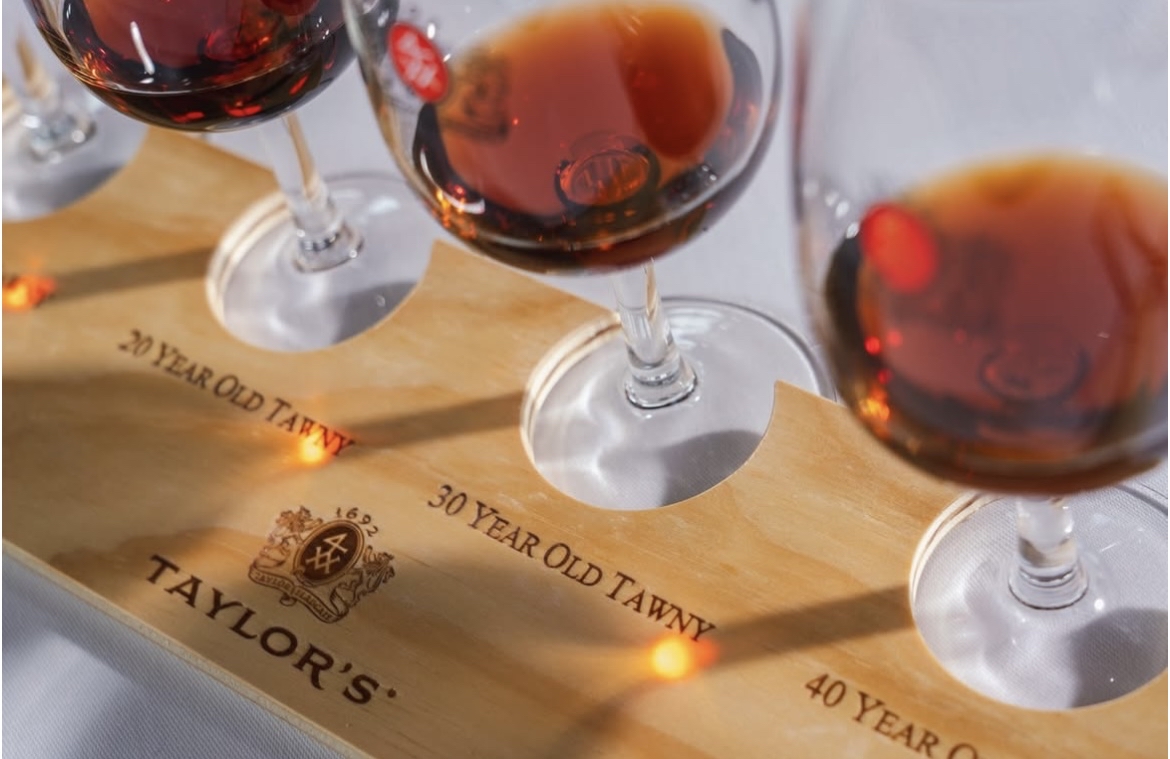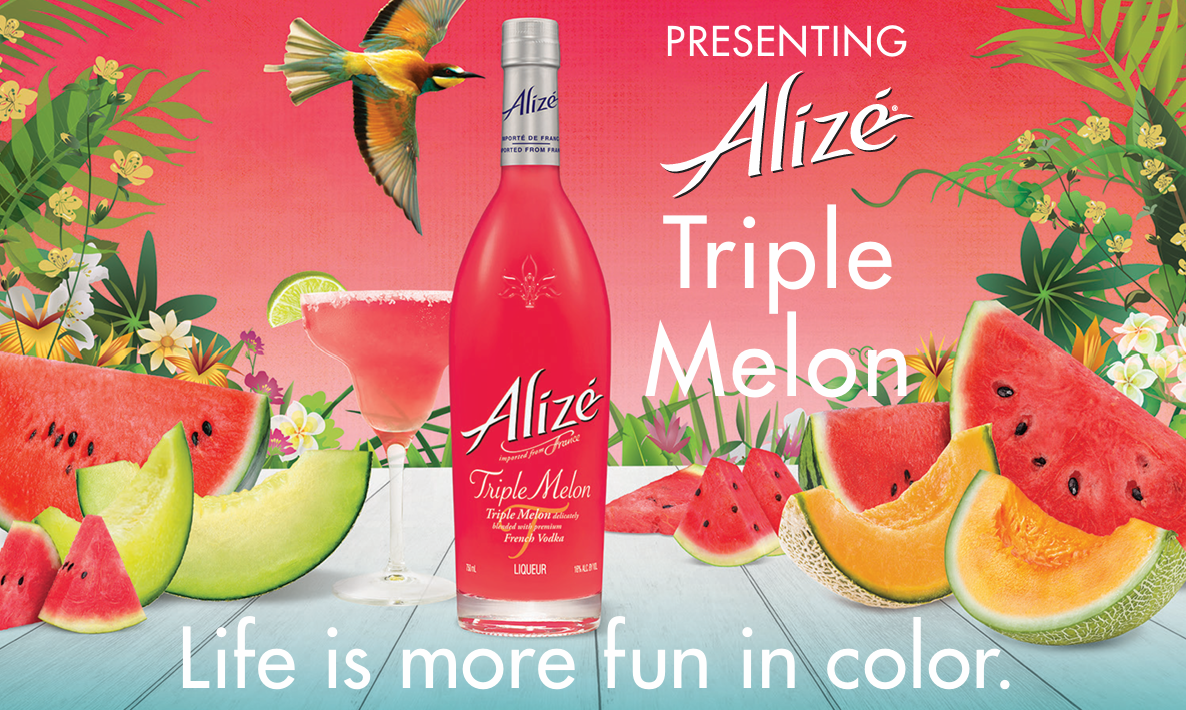National Port Wine Day is on September 10th, and there’s no better way to celebrate than with a glass of this timeless classic in hand. While many people think of Port simply as a sweet red dessert wine, its history, craftsmanship, and versatility run much deeper.

Port originates from Portugal’s Douro Valley, one of the world’s oldest demarcated wine regions. It is produced by fortifying the wine with grape spirit (typically Brandy) to preserve its natural sweetness and richness. This technique, perfected in the 17th century, gave birth to a wine that could endure long journeys by sea while developing its signature depth of flavor.
Today, Port is far from one-dimensional. The category encompasses a wide range of styles, each with unique character and ideal moments to enjoy:
- Ruby Port – vibrant, fruit-forward, and youthful.
- Tawny Port – aged in oak, offering warm, nutty, and caramelized flavors.
- White Port – fresh and versatile, perfect for cocktails like a Port & Tonic.
- Rosé (Pink) Port – bright, lively, and made for modern drinking occasions.

From fireside sipping to refreshing spritzes, the opportunities to enjoy Port are endless. And with bartenders and wine lovers alike rediscovering its versatility, we believe Port is making a true comeback.
Here’s a closer look at the different styles of Port and how to enjoy them.
Ruby Port:
Ruby Port is the most widely produced style of Port. It is known for its youthful vibrancy and deep, rich color, hence the name “ruby.” It is typically aged for a shorter period in large oak or stainless-steel vats, which helps preserve the wine’s fresh, primary fruit character.
Ruby Ports are generally more approachable and affordable than other styles. This makes them an excellent entry point into the world of Port.

-
Tasting Note:
-
- Expect flavors of ripe red and black fruits such as cherry, raspberry, and plum, often with a touch of spice or chocolate.
-
How to Drink it:
-
- Ruby Port can be enjoyed slightly chilled on its own, where its rich berry flavors and velvety sweetness make it a perfect after-dinner sip. It also pairs beautifully with chocolate desserts and cheeses or can be mixed into cocktails for a fruity, versatile twist.
-
Food Pairing:
-
- They pair beautifully with chocolate desserts, berry-based dishes, and strong cheeses like blue or aged cheddar. They’re equally enjoyable sipped on their own after dinner as well.
-
Aging
-
- Standard Ruby Port: Best enjoyed young, usually within 2 to 5 years of bottling.
-
- Reserve Ruby Port: Can hold for around 5 to 10 years, showing slightly more depth.
-
- Late Bottled Vintage (LBV): Typically lasts 10 to 15 years unopened, though it is often bottled ready to drink.
-
- Vintage Port: The pinnacle of Ruby style, capable of aging 20, 30, or even 40+ years in bottle, developing tremendous complexity over time.
Tawny Port:
Tawny Port is a beautifully aged style of Port that offers a warm, nutty, and complex flavor profile. Unlike Ruby Port, which is meant to showcase youthful fruitiness, Tawny Ports spend years maturing in small oak barrels, allowing gentle oxidation to develop rich caramel, dried fruit, and toasted nut notes.
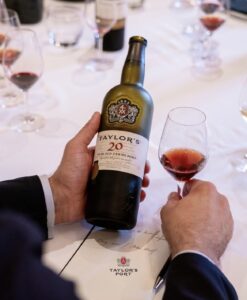
-
Tasting Notes
-
- Tawny Port is smooth, rich, and nutty, with flavors of caramel, dried fruits like figs and apricots, and subtle notes of spice or toasted nuts. It has a warm, lingering finish and a silky texture that makes it both comforting and elegant.
-
How to Drink
-
- Tawny Port is delightful on its own, making it an ideal after-dinner treat. It also shines in cocktails, adding depth and warmth to drinks. Try it with an Espresso Martini, Port Old Fashioned, Tawny Negroni, and many others.

-
Food Pairing
-
- It pairs seamlessly with desserts featuring caramel, nuts, or dried fruit, complements creamy cheeses like Brie or Stilton. It can even be enjoyed on its own as a contemplative after-dinner sip.
-
Aging
-
- Depending on its age designation, ten, twenty, thirty, or even forty years, the wine can range from lightly nutty with hints of apricot to deeply complex with layers of fig, toffee, and spice.
-
- Unlike Vintage Port, Tawny Port is already mature when bottled, so it won’t significantly improve with additional cellar aging. Well-stored bottles can last 10–20 years unopened, though the flavor remains largely unchanged since the aging happens in cask.
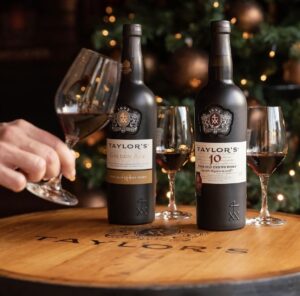
White Port:
White Port is a lighter, often crisp style of Port made from white grape varieties, offering a fresh and versatile alternative to the more familiar red Ports.

-
Tasting Note
-
- It can range from dry to sweet, with flavors of citrus, green apple, apricot, and sometimes a hint of honey or almond.
-
How to Drink:
-
- White Port is extremely adaptable. You can enjoy it chilled on its own as a refreshing aperitif. It is also used as the base for creative cocktails such as the popular White Port and Tonic. This combines White Port with tonic water, ice, and a citrus garnish.

-
Food Pairing
-
- Dry or Extra Dry White Port: Perfect as an aperitif with salted almonds, olives, charcuterie, or seafood such as oysters, shrimp, and smoked salmon.
-
- Off-Dry or Medium White Port: Matches well with semi-soft cheeses like Manchego or Gruyère, pâtés, roasted poultry, and light pasta dishes.
-
- Sweet or Aged White Port: Complements richer flavors such as foie gras, creamy blue cheeses, salted caramel desserts, nut-based pastries, or fruit tarts.
-
Aging
-
- White Port is typically enjoyed young, within a few years, to highlight its fresh, crisp, and fruity character. However, select aged White Ports, often labeled 10, 20, or 30 years, are matured in oak casks and can develop greater complexity over extended aging.
Its bright acidity and subtle fruit character make it a perfect introduction to Port for new wine drinkers or a sophisticated choice for warm weather sipping.
Pink or Rosé Port
Rosé Port, sometimes called Pink Port, is a newer and increasingly popular style that combines the richness of traditional Port with bright, fresh fruit flavors. It is made from red grape varieties, but with shorter skin contact than Ruby Port, resulting in a lighter color and a more delicate, refreshing profile.

-
Tasting Notes:
-
- Expect flavors of strawberry, raspberry, and red cherry, often balanced with a touch of citrus or floral notes.
-
How to Drink:
-
- Rosé Port is highly versatile, perfect served chilled on its own, over ice, or in cocktails like a Rosé Port Spritz.
-
Food Pairing
- Rosé Port pairs best with light, fresh foods that complement its vibrant strawberry and raspberry notes. It shines alongside summer fare such as fresh berries, citrus desserts, fruit tarts, grilled shrimp, or soft cheeses like goat cheese. It is especially refreshing when served chilled with appetizers or light salads.
-
Aging
-
- Rosé Port is meant to be enjoyed right away. It is best to drink within one to three years of bottling.
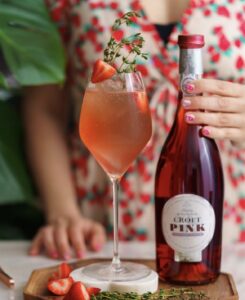
Its lively, approachable character makes it ideal for warm weather and casual gatherings. Perfect for anyone looking to enjoy the elegance of Port in a lighter, modern style.
Port is one of the world’s most storied wines, yet it keeps reinventing itself for modern tastes. Ruby offers youthful fruit, Tawny brings nutty complexity, White is crisp and versatile, and Rosé charms with vibrant freshness. Port isn’t just for sipping—it adds depth, richness, and character to both classic and creative cocktails. This National Port Wine Day, raise a glass to a wine that is timeless and wonderfully adaptable. Discover why Port remains one of Portugal’s greatest gifts to the world of wine.
